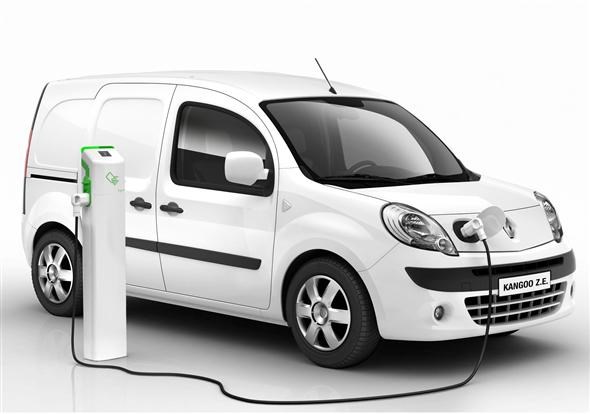Could now finally be the time to buy an electric van? As part of a £35 million investment designed to promote ultra-low emissions vehicles, the Government’s Office for Low Emissions Vehicles (OLEV) has today announced it plans to spend an additional £10m on the UK’s electric vehicle charging infrastructure.
Three-quarters of that amount – £7.5m – will be designated for workplace chargers, with the remaining £2.5m being spent residentially, both specifically in areas where there is no off-street parking. Potentially this means increased opportunity for you to charge an electric van at home and at work.
Report: Should you be buying an electric van?
Why does this matter?
While there are only a limited number of electric commercial vehicles on sale in the UK at present – the most popular being the Nissan e-NV200 and the Renault Kangoo ZE, though you can get an electric version of the Peugeot Partner and Mitsubishi makes a commercial version of the Outlander PHEV (Plug-in Hybrid Electric Vehicle) – this is an area of the market that is set for rapid expansion. Volkswagen and Mercedes, for example, have both committed to mass-producing an all-electric van by 2018.
The advantages to electric vans include:
- Low running costs (electricity is cheaper than diesel, maintenance costs less, too)
- Instant torque (electric motors provide immediate response)
- Silent running (more pleasant for the driver, more suitable for out-of-hours delivery)
- Zero emissions (which become increasingly important as more and more cities adopt ultra-low emission zones in an effort to improve air quality, potentially culminating in total bans on conventional engines)
Perceived disadvantages to electric vans include:
- Range anxiety (they don’t go as far as diesel vans, and are less convenient to “refuel”)
- Cost (high-tech electric drivetrains and batteries are expensive)
- Reduced payload (batteries are heavy and obviously need to be carried on board)
Of course, an increased number of charging points will relieve the range anxiety, costs are reduced as sales numbers increase, and although batteries are heavy, the Kangoo ZE already matches the payload capacity of its diesel equivalent while the e-NV200 actually beats it. This is easier in smaller vans, however, since manufacturers can up the Gross Vehicle Weight (GVW) rating to compensate for increased kerbweights; it’s more problematic in larger vans, where exceeding a 3.5-tonne GVW means they can no longer be driven on a regular car licence.
Is there a government grant for electric vans?
Electric vans are eligible for a grant of up to £8,000 (or a maximum of 20% of the VAT inclusive on-the-road purchase price).
This is actually a low-emissions grant, rather than a specifically electric one, and applies to any light commercial vehicle that emits less than 75g/km CO2 – meaning you can also save £8,000 on the price of a Mitsubishi Outlander PHEV commercial. The discount only applies to brand new vehicles.
What else is the Government spending the £35m on?
Some £20m of the total £35m is earmarked to promote charging points for ultra-low emission taxis (a move also intended to improve air quality in urban areas), with the rest split between zero-emissions motorbikes and scooters, and incentivising the deployment of hydrogen-powered fuel-cell vehicles.
Report: What ultra-low emissions zones mean for van drivers
Report: Should you be buying an electric van?
Road test: Nissan e-NV200 electric van
Road test: Electric Renault Kangoo ZE
Renault Kangoo ZE with batteries included
Just so you know, we may receive a commission or other compensation from the links on this website - read why you should trust us.




